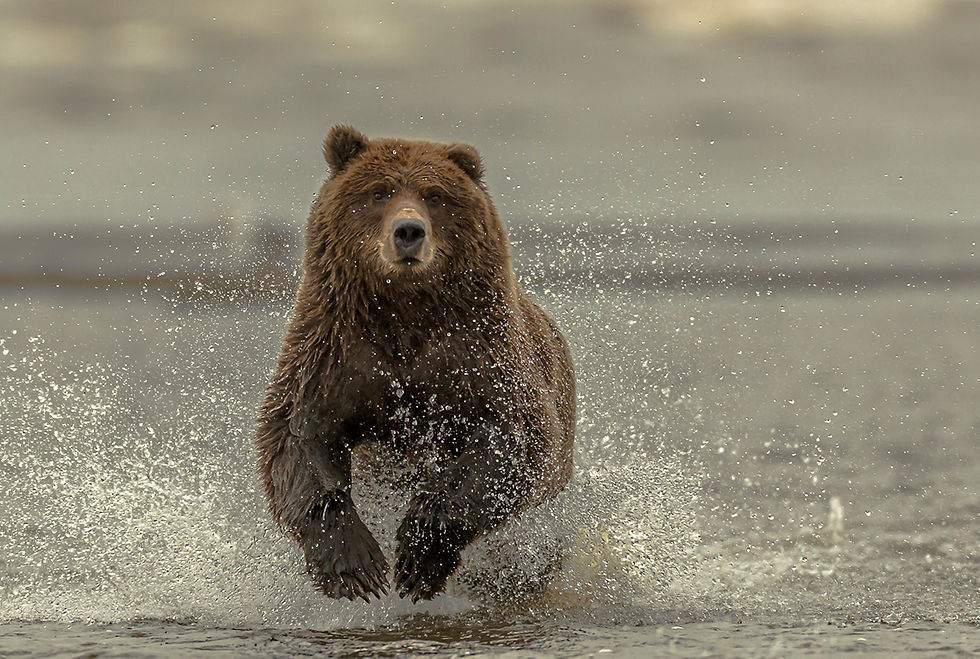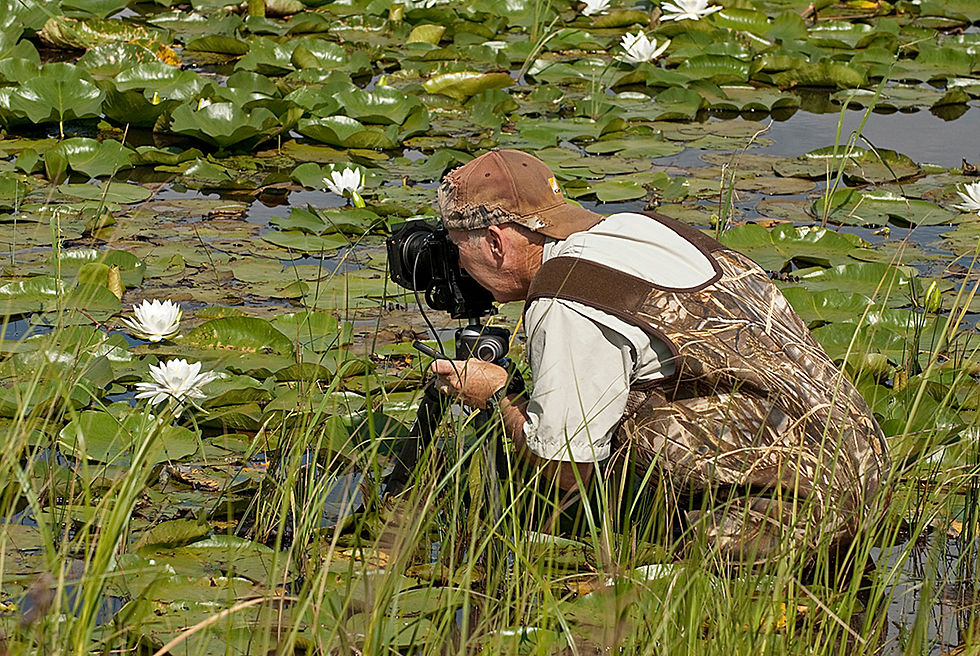Shooting wildlife... with a camera
- Sr Perspective

- Oct 28
- 4 min read
‘Being outdoors doing what I love keeps me feeling young’
By Maggie Gray

The lake is very still, veiled in an early morning mist, every sound magnified in the pristine quiet. Then it comes—that tremolo call, eerie and beautiful, the haunting call of the Minnesota Common Loon breaking the silence. John Pennoyer of Maple Grove waits, breath held, for the bird to break the surface in just the right light.
It was over 20 years ago when he first captured a few photos of the Common Loon on his fishing trips. He now sets out on those early mornings launching his kayak when morning conditions are calm and minimal wind. John likes to launch out about 45 minutes before sunrise to catch the right light.
“If I can come across some loons early enough, it makes for some really unique images. Sometimes when I launch, I will hear them calling and it also lets me know their location,” he said.
“I like cool mornings because the fog adds interest to my images,” he said. “My best loon photography happens about 30 minutes before and after sunrise. The loons on my lake are fairly tolerant, but I never stay more than an hour. Sometimes the wind pushes me too close, which neither the birds nor I like—it makes it hard to stay with them and keep focus.”

His favorite shot? An Alaskan brown bear at Lake Clark National Park. He’s traveled to Alaska eight times to photograph bears and bald eagles, but this moment still stands out.
“The bear was fishing for salmon when suddenly it spotted one and charged,” he recalled. “From our angle, it looked like the bear was coming straight at us—head up, eyes locked. In reality, it was after the fish, which it caught right in front of us. That image always gets a reaction when I show it in my photo classes.”
John always enjoyed photos, but his love for photography started because of one specific animal.
“I fell in love with photography because of whitetail deer,” he said. A serious bowhunter at the time, he picked up a camera to spend more time in the woods. “I thought it would let me be with the deer year-round. Little did I know it would change everything—teaching me more about the flora and fauna of the Midwest than I ever imagined.”
He still remembers his first great shot: a whitetail buck at Westwood Nature Center in 1982.
“It was rutting season, and a big buck came out of the cattails after a doe. He stopped and stared me down just long enough for me to get the shot—with my Nikon FE2, all manual back then. That stare gave me my first real image of a rutting buck.”

One question John often gets is whether he has ever capsized a canoe or kayak. He said he is lucky, but has not.
“I always have my lifejacket on, but I get asked by a lot of people if I have ever tipped over and they wonder if any of my equipment ended up at the bottom of a lake!” he said.
What is the most difficult images to capture?”
“Believe it or not—it’s spiders and their webs,” he said. “I’m working on that right now. The best time is late August into early September, but the conditions have to be perfect: no wind, clear or partly cloudy skies, a cool morning, and hopefully a little fog. The hardest part is simply finding the webs in the dark. I usually start about half an hour before sunrise, and I’ve got maybe 30 minutes after. Any later and even the slightest breeze will destroy the shot.”
Having grown up in Kalispell, Mont., John moved to Minnesota in 1962 and graduated from Dunwoody to be an Automotive Technician. He ended his automotive career after teaching General Motors’ techs for 25 years, retiring in 2006. He has been a Minnesotan since 1962 but states, “I still have a lot of Montana in my blood.”
“Aging hasn’t stopped me—it’s only a number,” he said. “I may be slower, but I can still get down for a shot—it just takes longer to get back up.” At 82, he keeps fit with regular walks and his photography keeps him active outdoors. “I can still do the things I did at 40, maybe not as fast or as long, but I can still get out there. My wife worries more about me than I do—and perhaps rightfully so.”

Photography has not only been a passion for John, but it has also taught him some things.
“Fifty plus years ago, I never had any idea how photography would help me become a better ‘naturalist’ on flora and fauna not just of Minnesota but other places where I have traveled,” he said. “This not only made me a better student but also allowed me to share my knowledge with others through the beauty of images, explaining the technique of getting the shot, but most importantly—the sensitivity of the environment and habitat.”
And it helps him get out of the house and remain active.
“Being outdoors doing what I love keeps me feeling young,” he said. His advice to seniors considering photography: use online resources, join a camera club, and learn from others.”

For him, photography is more than art.
“It shows people the beauty of nature, and why protecting our lands and wildlife matters.”
At 82, photography still courses through his veins like a second heartbeat. The camera has been his companion for a lifetime, carrying him into marshes, lakes and rivers where patience turns into revelation. Every image he makes is both a record of nature’s fleeting beauty and a reflection of his own endurance. For those who see his work, it is more than art—it is a reminder of how deeply a life can be lived in pursuit of wonder.




Comments